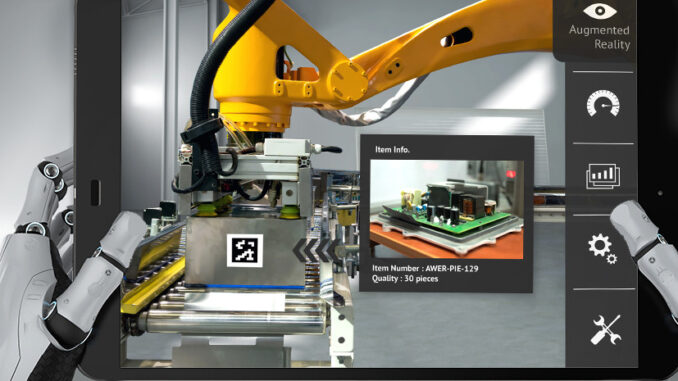
Augmented Reality (AR) has revolutionized various sectors by enhancing the way we interact with digital information and the physical world.
Here’s a detailed overview of how AR has brought significant changes: Revolutionizing Industries with AR








Retail and E-commerce:
Virtual Try-Ons: AR allows customers to virtually try on clothes, accessories, and makeup, enhancing online shopping experiences. Brands like IKEA and Sephora use AR apps to let customers visualize products in their homes or on themselves.
Interactive Storefronts: AR creates interactive storefronts where customers can scan products to get detailed information, reviews, and promotional offers.
Healthcare:
Surgical Assistance: Surgeons use AR to overlay critical information, such as patient data and anatomical guides, during operations, improving precision and outcomes.
Medical Training: AR provides immersive training for medical students, allowing them to practice procedures in a risk-free virtual environment.
Education:
Interactive Learning: AR transforms textbooks and classrooms into interactive learning environments. Students can explore 3D models of historical sites, scientific concepts, and more, making learning more engaging and effective.
Remote Assistance: Teachers can use AR to provide real-time assistance to students, regardless of their location, enhancing remote learning experiences.
Real Estate:
Virtual Property Tours: Potential buyers can take virtual tours of properties, seeing how they would look with different layouts and furnishings. This saves time and provides a better understanding of the space.
Architectural Visualization: AR helps architects and developers visualize and present their designs to clients, showing how projects will look in the real world.
Manufacturing and Maintenance:
Assembly and Maintenance Guidance: Workers use AR to see step-by-step assembly instructions or maintenance procedures overlaid on the machinery, reducing errors and increasing efficiency.
Remote Support: Technicians can receive remote support from experts who can see the equipment through the AR interface and provide real-time guidance.
Entertainment and Gaming:
Immersive Gaming: AR has created new genres of games that blend digital and physical worlds. Pokémon GO is a prime example of how AR can create engaging and location-based gaming experiences.
Interactive Experiences: Museums and theme parks use AR to create interactive exhibits and attractions that enhance visitor engagement and learning.
Marketing and Advertising:
Interactive Ads: Brands use AR to create interactive advertisements that allow users to engage with products in a novel way. This increases engagement and improves brand recall.
Enhanced Product Demos: AR enables customers to see how products work in their environment, providing a more comprehensive understanding of their benefits.
Navigation:
AR Navigation Apps: AR enhances navigation apps by overlaying directions onto the real world, making it easier to follow routes and find locations. This is particularly useful for walking directions in complex environments like airports and malls.
Technological Advancements Driving AR
Improved Hardware:
AR Glasses: Devices like Microsoft HoloLens and Magic Leap provide more immersive AR experiences by freeing users from handheld devices.
Smartphones and Tablets: Advances in camera and sensor technology have made AR more accessible through mobile devices.
Software Development Kits (SDKs):
ARKit and ARCore: Apple’s ARKit and Google’s ARCore provide robust frameworks for developing AR applications, making it easier for developers to create sophisticated AR experiences.
Machine Learning and AI:
Enhanced Object Recognition: AI-powered object recognition improves the accuracy and functionality of AR applications, enabling more complex interactions with the physical world.
Natural Language Processing: Integrating NLP with AR allows for voice commands and more intuitive user interactions.
Challenges and Future Directions
User Experience:
Ease of Use: Ensuring AR applications are user-friendly and intuitive is crucial for widespread adoption.
Seamless Integration: Achieving seamless integration of AR content with the real world remains a challenge, particularly in dynamic environments.
Privacy and Security:
Data Privacy: AR applications collect a lot of data about users and their environments, raising concerns about privacy and data security.
Security Risks: Ensuring the security of AR applications is vital to prevent malicious attacks and misuse.
Content Creation:
High-Quality Content: Creating high-quality AR content is resource-intensive and requires specialized skills, which can be a barrier for smaller companies.
Technical Limitations:
Battery Life: AR applications can be demanding on device batteries, limiting their usage duration.
Processing Power: Ensuring smooth performance on mobile devices requires efficient processing and optimization techniques.
The revolution brought by AR is ongoing, with continuous advancements in technology and increasing adoption across various sectors. As hardware improves and new applications emerge, AR’s impact on our daily lives and industries will continue to grow, offering more immersive, efficient, and engaging experiences.

Leave a Reply